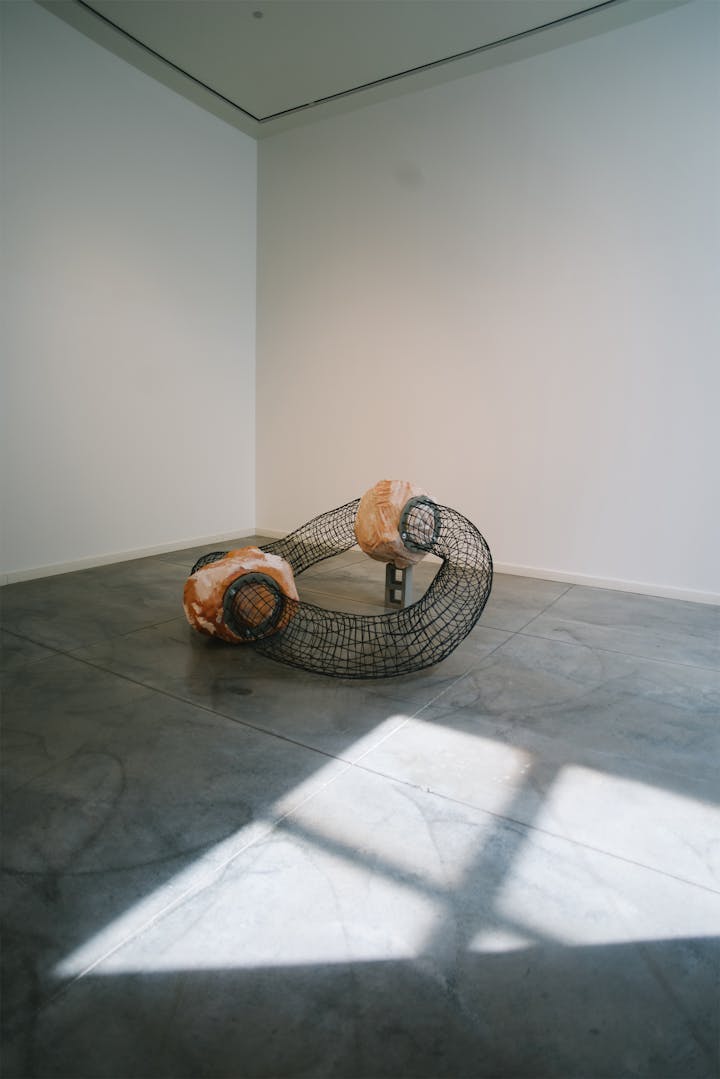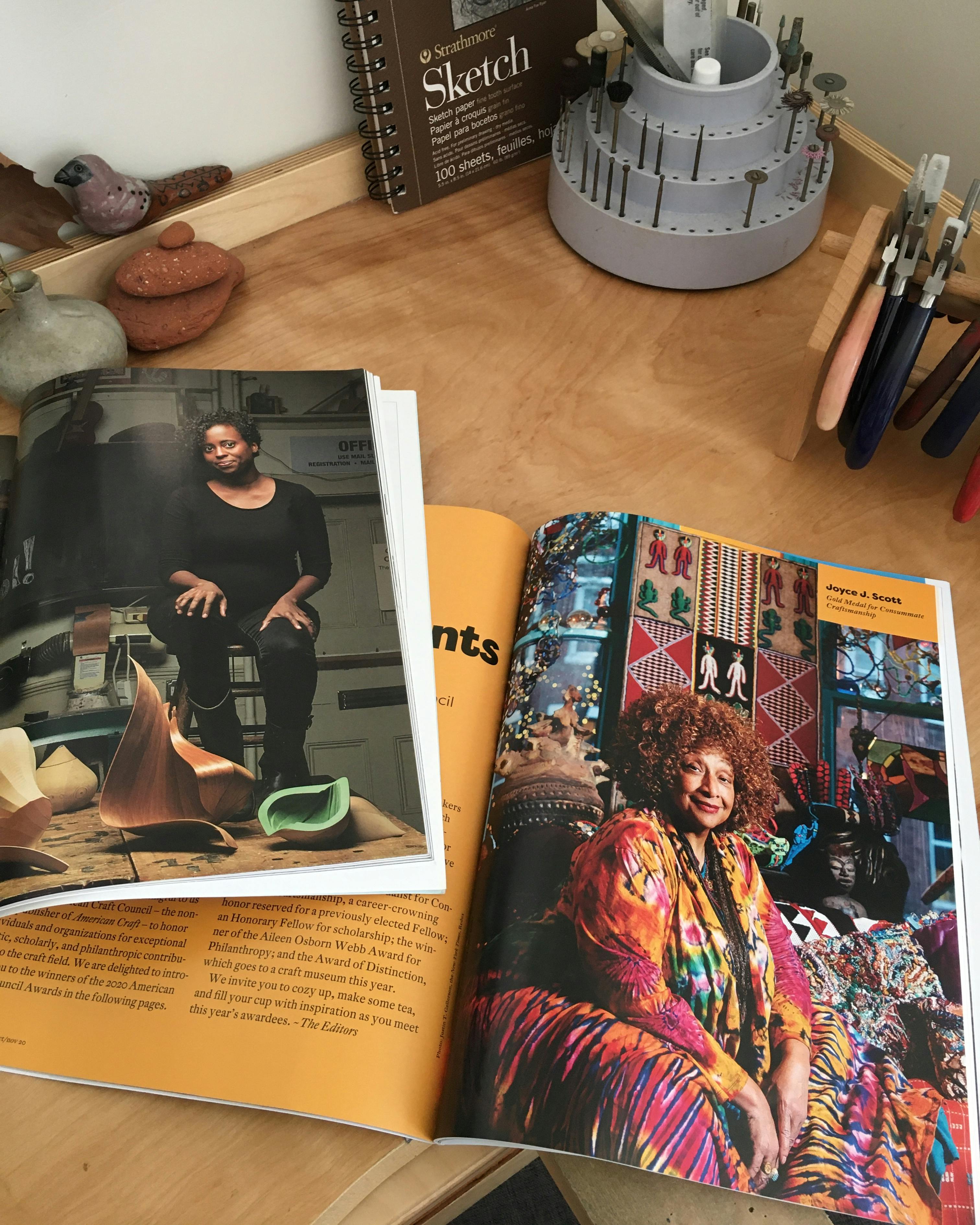Maker: Sarita Westrup
Maker: Sarita Westrup
Sarita Westrup weaves a basket. Photo by Billy Hank St. John.
Weaver and sculptor Sarita Westrup was in high school in the Rio Grande Valley when she watched the PBS show Craft in America and first saw a loom on the screen. “I learned that craft was something in the world, and I wanted to be a part of it somehow,” she says. At the time, Westrup hadn’t taken a formal art class and didn’t know about looms, but she remembers thinking, “I’ll do whatever to get on that loom that I saw on television.”
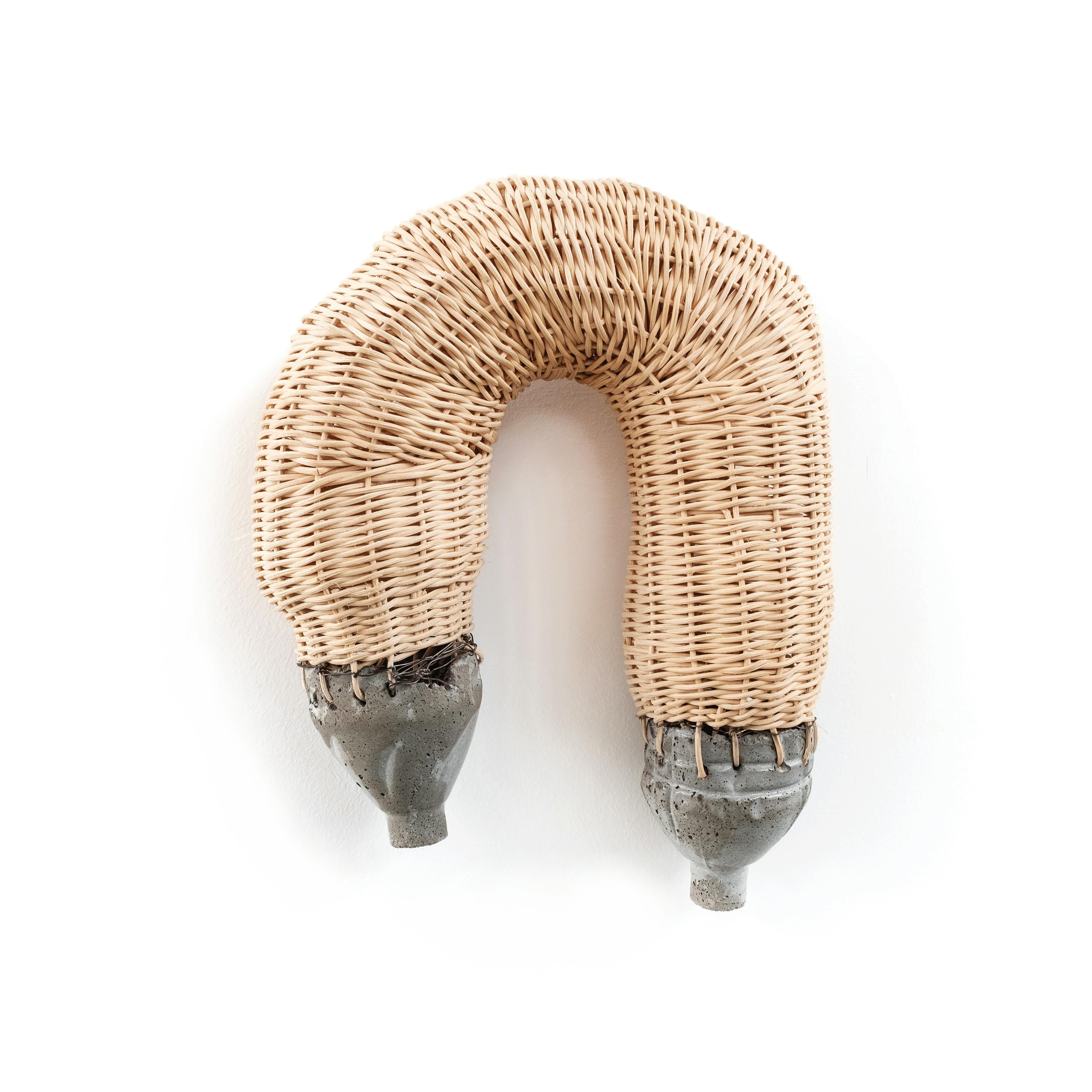
Westrup used plastic bottles for cement molds, twined reed, and wire for Untitled Portal (2017). Photo by L Autumn Gnadinger.
Westrup credits Ann Coddington Rast, who was a visiting artist when Westrup was in graduate school, with teaching her how weaving could become a three-dimensional form. Being exposed to Chicano art history and developing a formal understanding of the aesthetics of where she grew up also deeply influenced Westrup. Rasquache, for example, was a term that put a name to what she knew: “making use of what you have—to create something out of nothing.” One of Westrup’s sources of early inspiration for her art was dollar stores.
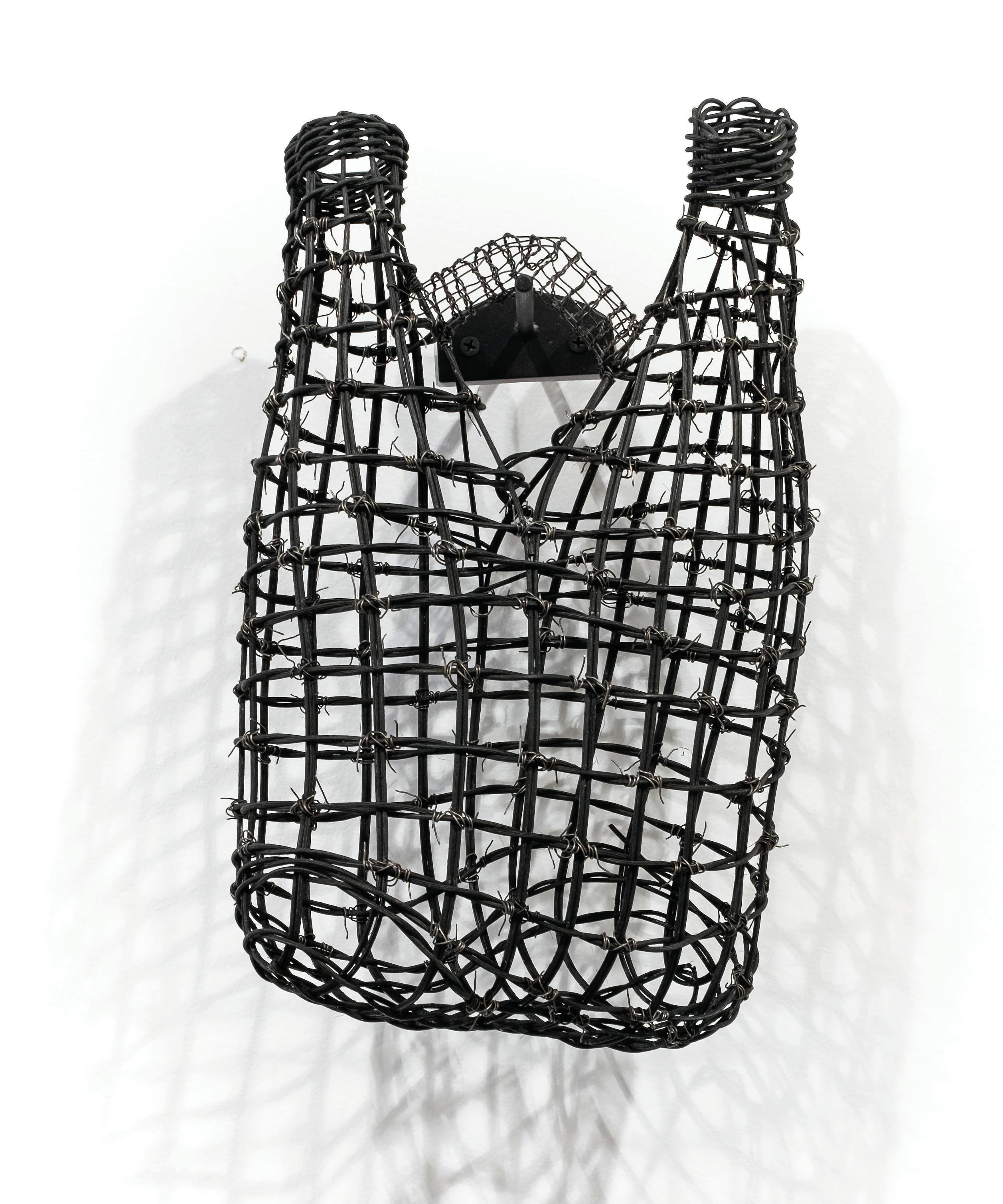
Duality with Bridge (2019) is separated at the top like the US/Mexico border and joined at the bottom to reflect shared earth. Photo by L Autumn Gnadinger.
Being raised so close to Mexico and by parents of Mexican descent compelled Westrup to examine her identity. “I grew up on the border, not understanding my Americanness very clearly,” says Westrup. When she started making art, identity and geography kept showing up as themes. She often uses some combination of materials—like bottles, arches, eggs, and cement—to explore the borderlands she’s from. She traces her love of textiles to the border’s souvenir culture. “As a kid, we would go to Mexico, and I would come back with a little tela, a little purse, something we could afford…something I could keep and remember.”
In addition to her current position as textile studio coordinator at the Penland School of Craft and her individual practice, Westrup also collaborates with other artists. She and Analise Minjarez are the duo behind Tierra Firme and create large-scale works. Westrup also inherited jugs from her friend Zeke Peña’s 2015 project, Waterbound, which involved people in El Paso writing messages on water jugs and leaving them in the desert for border crossers to find and nourish themselves.
“For me these water bottles started as objects to represent folks we had lost in the desert. When Zeke gave me them, I saw them as markers,” she says. Unlike the original containers, Westrup’s sculptures lack the ability to hold water—similar, she says, to how “the United States is not able to nourish our immigrant community.”
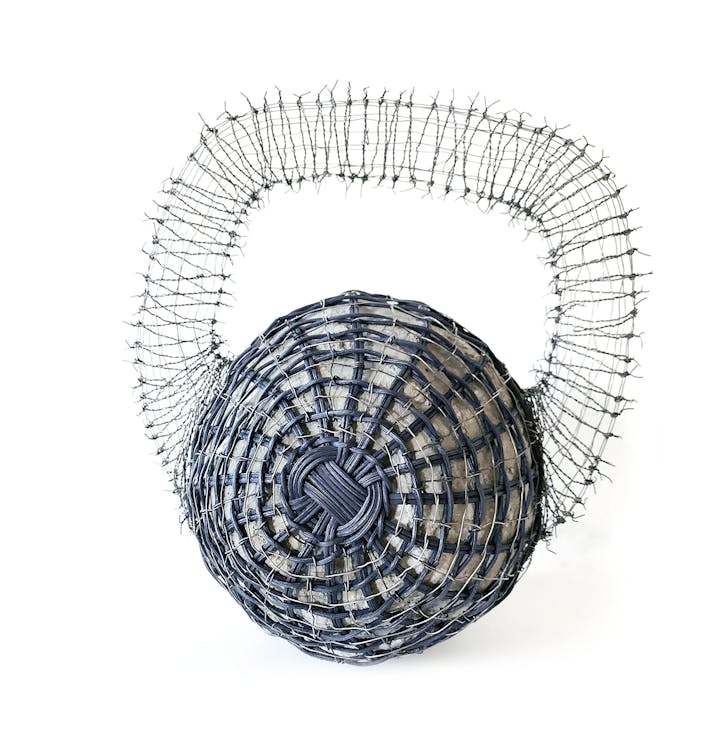
Weightless Weight II (2020) is made from twined reed, twined wire, cement, foam, and paint. Photo by Sarita Westrup.
The way she combines different materials reflects both the joy and suffering that exist in the borderlands. “My work comes from a place of personal experience, a way for me to reflect on my home. It’s not always based on data, numbers, or news.” And, just as the border is a place of contradiction, she says, “The work holds all of that contradiction inside of it.”
tierrafirmeproject.com | @saritawestrup
Discover More Inspiring Artists in Our Magazine
Become a member for a subscription to American Craft magazine and experience the work of artists who are defining the craft movement today.

